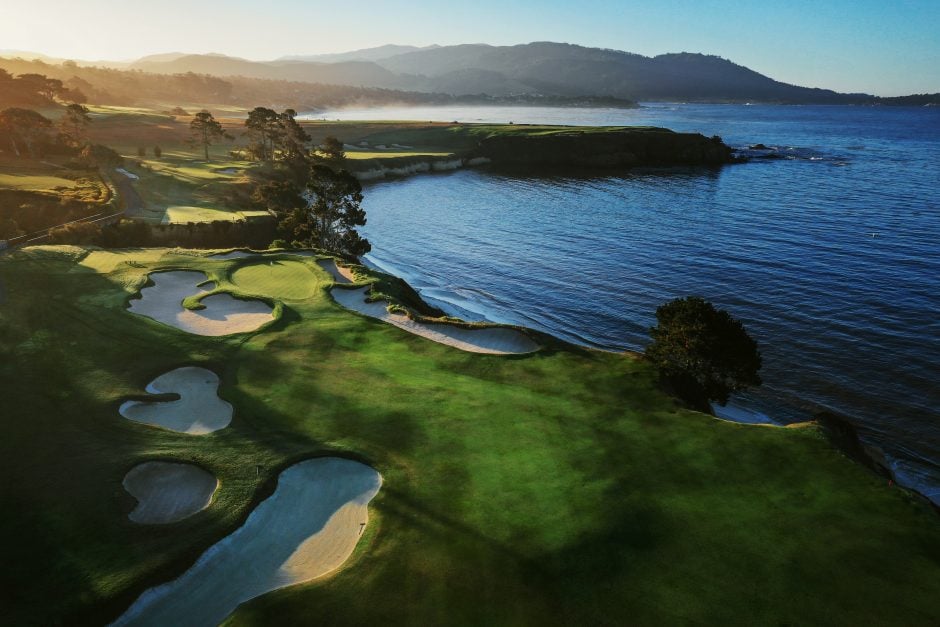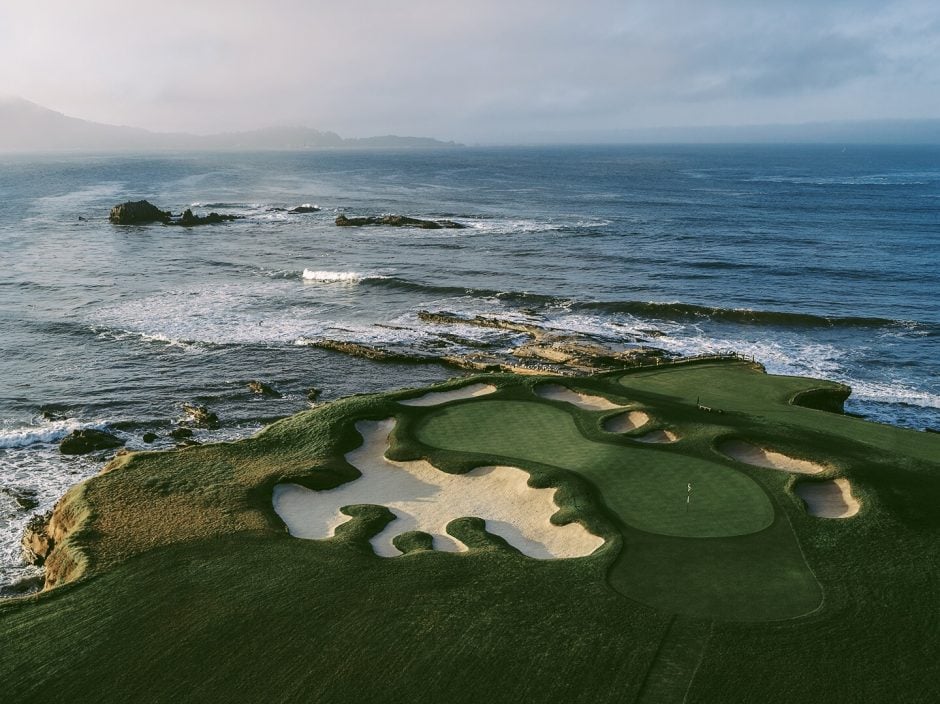How Does Pebble Beach Test the Best? With the Smallest Greens in Major Championship Golf
Pebble Beach Golf Links is the shortest course on the PGA TOUR. Even when Pebble Beach hosts the 2019 U.S. Open, it will take some creative tee boxes — No. 10 backs up to practically the middle of the ninth fairway — to stretch the course to 7,075 yards.
So how exactly does Pebble Beach manage to challenge the best players in the world? Says 2002 PGA Championship winner Rich Beem:
“It’s one of the most intimidating golf courses I’ve ever played. You get caught up in the views so easily, and all of a sudden, you’ve got all of these difficult shots into greens that look like the size of dimes.”

It’s one of the most intimidating golf courses I’ve ever played. You get caught up in the views so easily, and all of a sudden, you’ve got all of these difficult shots into greens that look like the size of dimes.
Tiger Woods played a reconnaissance round the week after the PGA Championship and noted, “I forgot how small the green complexes are. Add a little bit of firmness and speed to them and they get really tiny.”
A design tenant architect Jack Neville strongly believed was to test the best golfers by giving them long irons into small greens. Many of the most iconic holes at Pebble Beach – Nos. 8, 9, 10 and 17 – now demand this.
The average Pebble Beach green is just 3,500 square feet, the smallest on the PGA TOUR. The average green depth at Pebble Beach is just 26 paces. And those greens are surrounded by 118 bunkers — or six more than the Old Course at St. Andrews. You could also fit nearly four Pebble Beach greens into the average St. Andrews green (13,600 square feet).
It’s a U.S. Open challenge unique to Pebble Beach.
“We think it’s wonderful,” says the USGA’s John Bodenhamer, who is in charge of the 2019 championship setup. “It really allows the world’s greatest players the ability to showcase the great skills that they have. There’s a premium on accuracy, and then you have these little tiny putting greens. You’ve got to drive it in the fairway, and you’ve got to control your irons shots. There’s enough slope on these greens that you’ve really got to think about where you put the ball.”
Every green is pitched from back-to-front except No. 5 — a 1998 Jack Nicklaus creation. The key to scoring is playing your approach shots to the front edge of greens, leaving manageable uphill putts from below the hole. (That’s how Tiger Woods went the entire 2000 U.S. Open without a three-putt.) Says Rocco Mediate about the severely sloped No. 11:
“I’d rather be 20 feet under the hole than 5 feet above it.”
The two smallest greens at Pebble Beach are also perched atop cliffs, creating two of the most intimidating approach shots you will face. No. 8 is just 22 paces deep, while the left half of No. 17 is a mere 16.

Pebble Beach really allows the world’s greatest players the ability to showcase the great skills that they have. There’s a premium on accuracy, and then you have these little tiny putting greens.
And then there’s No. 14, which is technically 25 paces deep, but walled off by a gaping bunker and a giant false front that climbs half-way into the green. During the 2016 AT&T Pebble Beach Pro-Am, only 41.8% of pros hit No. 14 in regulation, more than 6 percentage points worse than the next toughest par-5.
“It’s probably the hardest third shot in all of golf,” Woods said.
Once you’re on these greens, you need to read them correctly. World Golf Hall of Famer Hale Irwin says, “I think the third green is the hardest green to read in the whole world.”
Adds 2016 Pebble Beach Invitational winner Scott McCarron about No. 7, “Everything breaks to the ocean, but it’s all around you. I can never figure out where that putt is going to break.”
A helpful tip Pebble Beach Golf Academy Director of Instruction Laird Small shares is to start reading your putt from 30 yards out as you approach the green. You’ll be able to pick up the overall slope of the green, which is almost always feeding to the ocean.
But what about when the ocean’s all around you? Well, listen to your caddie.
Photography by Channing Benjamin and Evan Schiller.